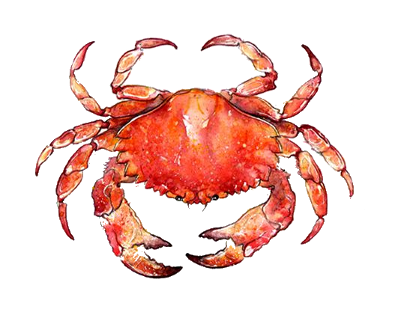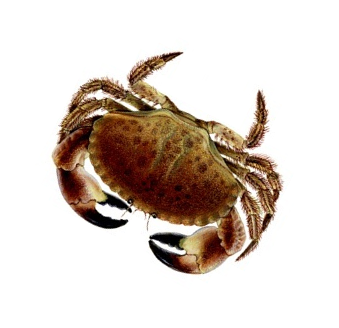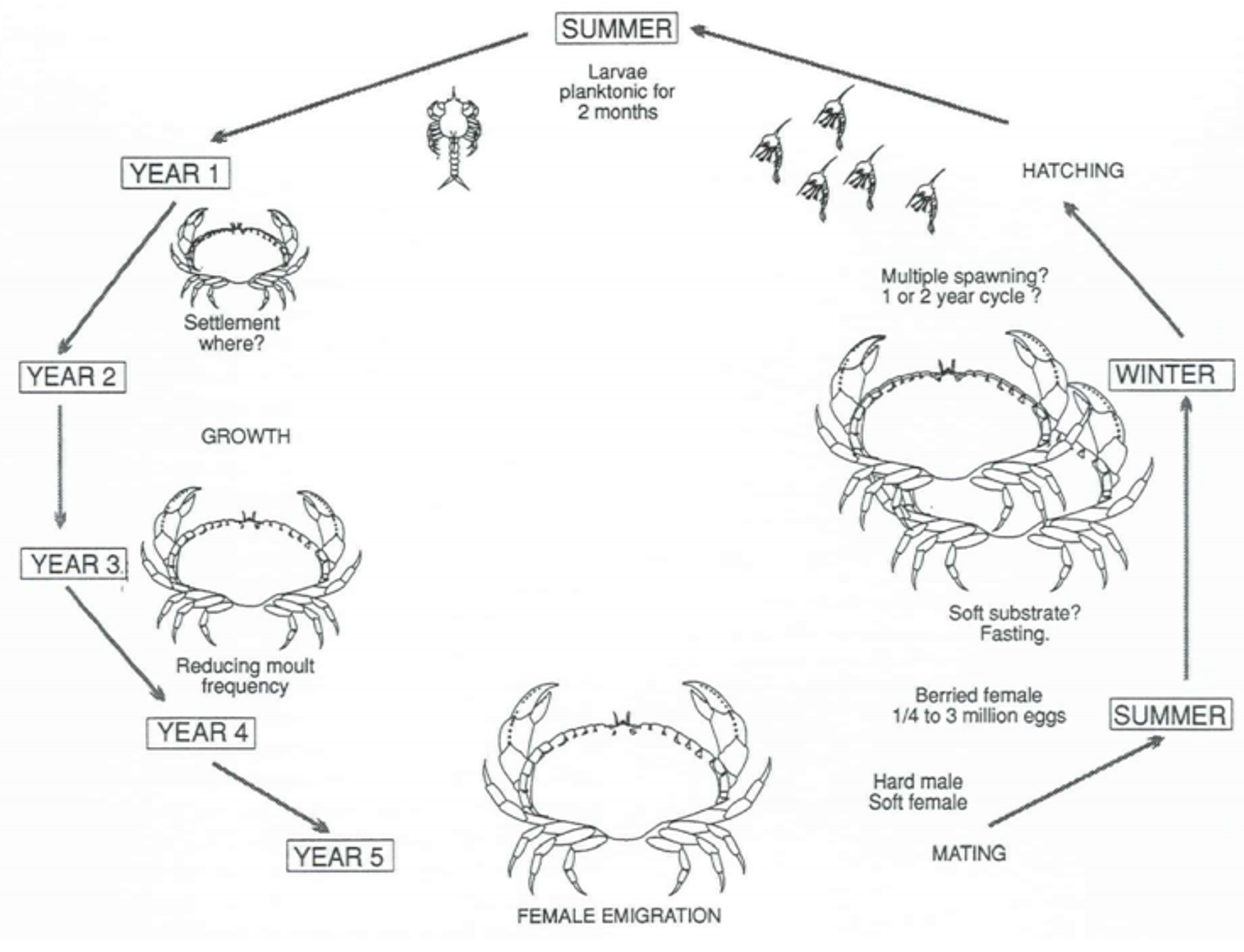History of the brown crab in Ireland

The brown crab fishery is a highly capitalised industry of economic significance in present Ireland. Cancer pagurus also known as edible crab or Portán Dearg in Irish/Gaeilge is the heaviest Irish crab and easily be identified by a characteristic ‘pie-crust’ edge to the carapace.
It is caught on Irish coasts in deeper waters (>50m) and brought into ports such as in Wexford, Galway & Donegal. Traditionally an inshore fishery, a significant proportion of landings are now from the offshore fleet of live-holding or vivier vessels, predominantly off the northwest coast of Ireland. Although it was as plentiful as lobsters throughout the centuries, the brown crab never got the same recognition as the lobster or the same status in Irish history.
C. pagurus are exploited commercially throughout their range and subject to the largest crab fishery in Western Europe, centred on the coasts of the Ireland and the UK. In the 1870s, a conservation measure was brought in making it illegal to catch and keep brown crabs of too small a size around the coast of Ireland (before they are able to reproduce). Crabs with a shell diameter of less than 130-140 mm must not be taken.
Targeted fisheries for brown crab in Ireland developed during the 1960s. Various surveys were commissioned by BIM between 1965 and 1992 to identify the distribution of commercial quantities of crab around the Irish coast. The offshore fishery developed in 1990 off the Malin Shelf and the first processing plants were developed in Donegal in 1968-1969.
Despite the importance of this species there is very little known about overall stock numbers, or the extent to which current fishing intensity is depleting stocks and the widely dispersed fishery around the British and Irish coasts, is thought to be overfished across much of this area. In 2019 the brown crab was the top 5 landed species by value and top 2 shellfish (after the Dublin prawn) by the Irish fleet with 5,500 tonnes (BIM 2019).
Management measures for stocks may be at the EU / national or regional / local level, e.g. in coastal waters out to 6 miles, potting is regulated by a number of Sea Fishery Committees’ (SFC) byelaws. In this region there is protection of berried females and soft-shelled crabs, a ban on using edible crabs as bait, a ban on the landing of claws only and gear restrictions.
Ecology of the brown crab

The brown crab (Cancer pagurus) or edible crab is widely distributed in coastal waters of the Mediterranean, Atlantic, English Channel and North Sea. It is usually a reddish-brown in colour and typically grows up to about 25 cm carapace width, with the larger specimens inhabiting deeper water. As an invertebrate like all insects, the crab is encased in a hard, rigid shell, which, like other crustaceans, has to be shed at intervals to permit growth.
Moulting takes place at frequent intervals during the first years of a crab’s life, but only every two years after it is grown. This is mirrored by a slowing of growth rate. Juvenile crabs settle in the intertidal zone and remain in these habitats for 3 years, until they reach 6-7cm carapace width, at which time they migrate to subtidal habitats. Edible crabs can live for up to 100 years, while the average is around 25-30 years, and sexual maturity is reached after approximately 10 years. Reproduction occurs in winter and this species is highly fecund. The male stands over the female and forms a cage with his legs protecting her while she moults. Internal fertilisation takes place before the hardening of the new carapace, with the aid of two abdominal appendages (gonopods). After mating, the female retreats to a pit on the sea floor to lay her eggs. Between 250,000 and 3,000,000 fertilised eggs are held under the female's abdomen up to eight months until they hatch.

The brown crab is an active nocturnal predator feeding mainly on other, smaller crustaceans and molluscs as well as dead organisms. In its adult stage it is placed at ecological trophic level 3 in the food pyramid of the marine foodweb. Their predators in their natural habitats of sand, gravel or rock are wolf fish, seals, cod and octopus which even attacks them inside the crab pots that fishermen use to trap them.
Recent studies have shown that edible crabs are negatively affected by electromagnetic fields emitted from sub-sea power cables around offshore wind farms.

